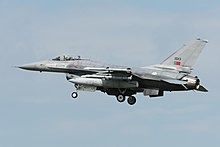History
Activated with the designation 301 Squadron in 1978, the origins of the "Jaguares" squadron dates back to the former Portuguese Air Force squadrons that operated the Fiat G-91 Gina between 1965 and 1993. During the Portuguese Colonial War these squadrons executed more than 13,000 operational missions, with five aircraft having been shot down by anti-aircraft artillery (AAA) and surface-to-air missiles (SAM).
In August 1974, in the post-revolution period, the transfer of the Fiat G-91 aircraft from Air Base 5, in Monte Real, and of all air bases in the Portuguese African colonies to Air Base 6, in Montijo was initiated. The 62 Squadron was then created to operate the Fiat G-91.
With the reorganization of the Air Force's aerial units, in 1978, the squadron's designation was changed to 301 Squadron, thus assigning as its primary mission the execution of operations of close air support (CAS), air interdiction (IA) and tactical air reconnaissance, as well as its secondary mission the execution of actions of tactical air support for maritime operations (TASMO) and of air defense operations (DCA).
On June 27, 1993, with the last flight of the Fiat G-91 in service with the Portuguese Air Force, and the subsequent retirement of this aircraft, as well the recent restructuring of the PoAF, the 301 Squadron was transferred to Air Base 11, in Beja, having been equipped with the ground-attack aircraft Alpha Jet A. This aircraft's first flight was conducted on October 6, 1993, by of Major Lopes da Silva.
During the joint exercise COMAO (Composite Air Operations), on September 5, 2005, the 301 Squadron reached the 20,000 flight hours with its Alpha Jet fleet. Shortly after, on November 20, 2005, the "Jaguares" conducted their last operation flight with the Alpha Jet.
On November 25, 2005, the 301 Squadron was transferred to Air Base 5, in Monte Real, and equipped with the modernized F-16 MLU, being the first flight squadron of the Portuguese Air Force to operate exclusive this version of the fighter.
This page is based on this
Wikipedia article Text is available under the
CC BY-SA 4.0 license; additional terms may apply.
Images, videos and audio are available under their respective licenses.
